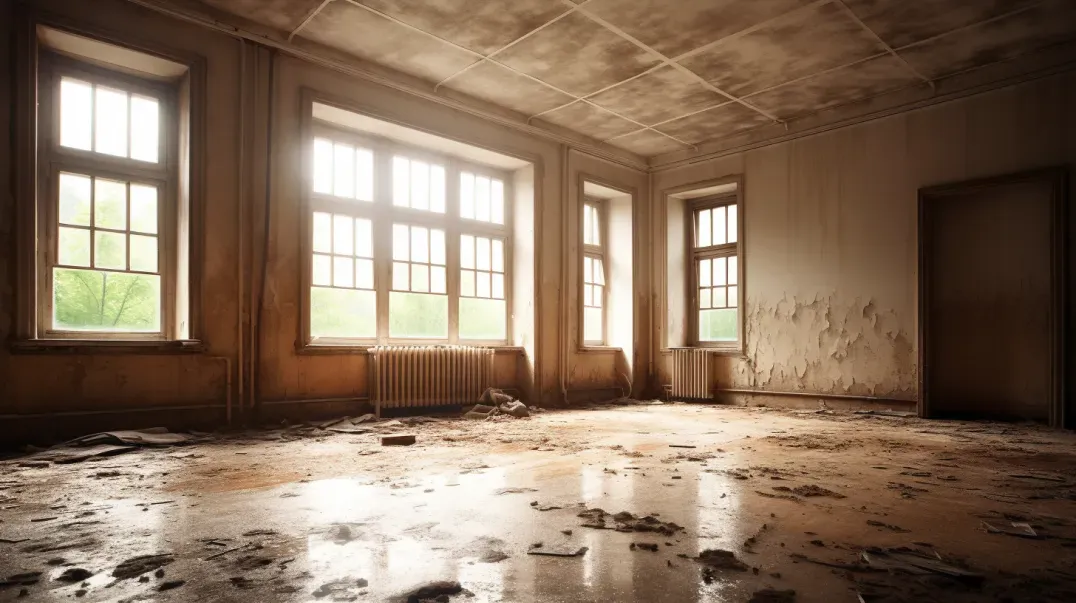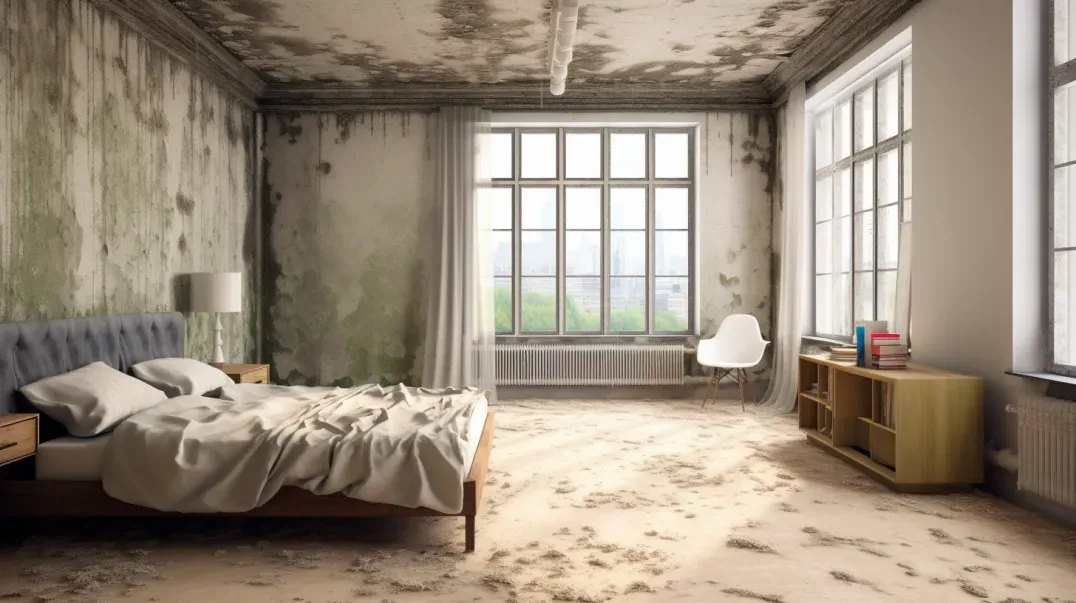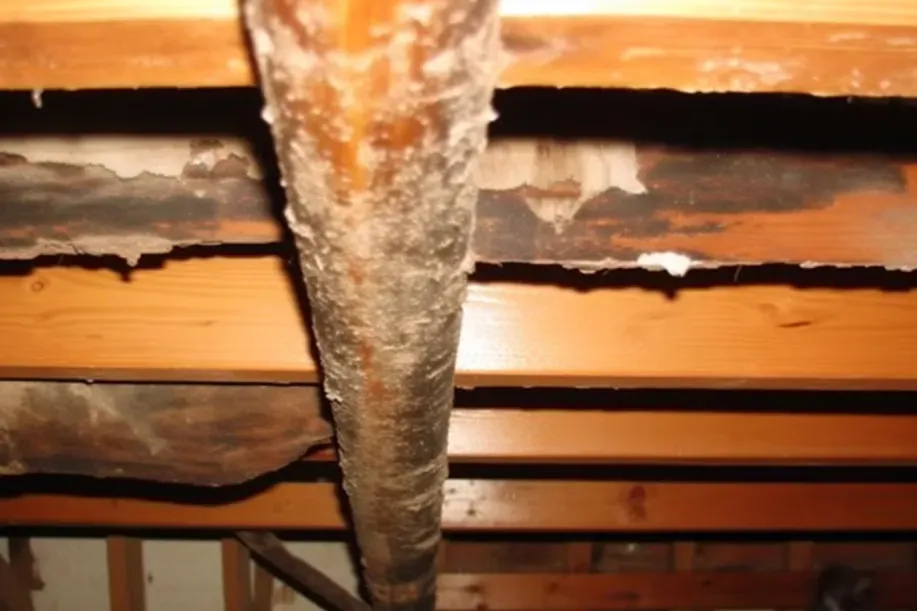Crawl Space Ventilation and Mold Control
Often overlooked in routine home maintenance, crawl space ventilation plays a pivotal role in maintaining a healthy and durable home. This blog aims to highlight the importance of proper ventilation in crawl spaces and its direct connection to preventing mold growth, a common issue in many homes.
Crawl spaces, being out of sight, can sometimes be out of mind, leading to neglect in their care and maintenance. However, these spaces are integral to the overall health of a building's structure and indoor air quality. Adequate ventilation in crawl spaces is crucial for mitigating moisture accumulation, which is a primary factor in mold growth.
In this blog, we will explore how poor ventilation in crawl spaces creates an ideal environment for mold to thrive. Mold growth in these areas is not just a structural concern but also poses significant health risks to the occupants of the building. We will delve into the science behind mold growth in crawl spaces, understanding how factors like humidity, temperature, and air flow contribute to this issue.
Furthermore, we will discuss the broader implications of mold growth in crawl spaces, including its impact on indoor air quality and the structural integrity of the building. By drawing a clear connection between crawl space ventilation and mold prevention, this blog aims to provide homeowners with the knowledge and motivation needed to take proactive steps in ensuring their crawl spaces are well-ventilated, thereby safeguarding their homes from mold-related issues.
Join us as we navigate the often-hidden world of crawl spaces, uncovering the critical importance of proper ventilation. Whether you are a new homeowner, a long-term resident, or a property manager, this blog will equip you with essential insights and practical tips for maintaining healthy, mold-free crawl spaces. Understanding and addressing the ventilation needs of these spaces is a key step in preserving the longevity of your property and ensuring a safe, healthy living environment for all occupants.
Understanding Mold in Crawl Spaces
Mold in crawl spaces is a common issue that many homeowners face, yet its implications are often not fully understood. This section of the blog aims to provide a comprehensive understanding of what mold is, why it tends to grow in crawl spaces, and the associated health and structural risks.
What is Mold and Why Does it Grow in Crawl Spaces?
Mold is a type of fungus that reproduces through spores and thrives in moist environments. Here’s an overview of mold and its growth in crawl spaces:
- Characteristics of Mold: Mold comes in various types and colors, ranging from black and green to white and orange. It thrives in environments that provide moisture, organic material for food, and adequate warmth.
- Growth Conditions in Crawl Spaces: Crawl spaces often provide the perfect conditions for mold growth due to their typically high humidity levels and poor ventilation. These areas are prone to moisture accumulation from ground moisture, leaks, and condensation, creating an ideal breeding ground for mold.
- Types of Mold in Crawl Spaces: Common types of mold found in crawl spaces include Cladosporium, Penicillium, Aspergillus, and Stachybotrys chartarum (black mold). Each type has different characteristics and growth patterns.
Health and Structural Risks of Mold in Crawl Spaces
The presence of mold in crawl spaces poses significant health and structural risks:
- Health Hazards: Mold spores can lead to various health issues, especially for individuals with allergies, asthma, or compromised immune systems. Exposure to mold can cause symptoms such as respiratory problems, allergic reactions, headaches, and fatigue. In severe cases, it can lead to more serious health conditions.
- Structural Damage: Mold can also cause structural damage to homes. It feeds on and breaks down organic materials like wood and insulation, compromising the structural integrity of the building. Over time, this can lead to costly repairs and decrease the value of the property.
Understanding the nature of mold in crawl spaces and the risks it poses is essential for homeowners. Properly addressing mold issues involves not only removing the existing mold but also taking steps to control moisture and improve ventilation to prevent future growth. By doing so, homeowners can protect both their health and the structural integrity of their homes.
The Role of Ventilation in Mold Prevention
Proper ventilation plays a crucial role in preventing mold growth in homes, particularly in areas like crawl spaces where moisture can accumulate. This section of the blog explores how ventilation affects mold growth and provides guidelines for effective crawl space ventilation to maintain a healthy and mold-free environment.
How Ventilation Affects Mold Growth
Ventilation is key in controlling the moisture levels in indoor environments, which directly impacts mold growth. Here’s an explanation of this relationship:
- Moisture Control: Mold requires moisture to grow. Effective ventilation helps reduce indoor humidity levels, removing excess moisture that can lead to mold growth.
- Air Circulation: Good ventilation ensures continuous air circulation, preventing the stagnant air conditions that can foster mold growth. It helps in drying out damp areas and reducing the likelihood of mold developing.
- Temperature Regulation: Ventilation also helps in regulating temperature. Consistent airflow can prevent the warm, humid conditions that mold thrives in, especially in areas like crawl spaces that are prone to temperature fluctuations.
- Preventing Condensation: Proper ventilation reduces the risk of condensation by balancing the indoor and outdoor temperatures. Condensation often leads to damp surfaces, which are ideal for mold growth.
Ventilation Best Practices
Implementing effective ventilation strategies is essential for mold prevention, particularly in areas susceptible to moisture accumulation like crawl spaces. Here are some guidelines for effective ventilation:
- Ensure Adequate Venting: Crawl spaces should have sufficient venting to allow for air exchange. This can include installing vents around the perimeter of the space.
- Use of Fans and Dehumidifiers: In areas where natural ventilation is limited, using fans or dehumidifiers can help in maintaining dry conditions and preventing mold growth.
- Regular Maintenance: Regularly check and maintain ventilation systems to ensure they are functioning properly. This includes cleaning vents and replacing filters as needed.
- Balanced Ventilation: Ensure that the ventilation system is balanced to effectively circulate air without causing negative pressure, which can draw in moisture from the outside.
- Professional Assessment: Consider a professional assessment to determine the optimal ventilation strategy for your space, especially if you have a history of moisture or mold issues. A professional can provide tailored solutions based on the specific layout and conditions of your property.
By understanding the critical role of ventilation in mold prevention and implementing these best practices, homeowners can significantly reduce the risk of mold growth. Effective ventilation not only contributes to a healthier living environment but also helps in maintaining the structural integrity of the property.
Assessing Your Crawl Space Ventilation
Proper ventilation in crawl spaces is crucial for maintaining a healthy home environment and preventing issues like mold growth and structural damage. This section of the blog focuses on how to identify signs of inadequate ventilation in crawl spaces and outlines steps for conducting a thorough ventilation assessment.
Signs of Inadequate Ventilation
Recognizing the symptoms of poor ventilation in crawl spaces is the first step in addressing any underlying issues. Here are key signs to look out for:
- Persistent Musty Odors: A continuous musty or moldy smell emanating from the crawl space is a clear indicator of poor ventilation.
- Visible Mold Growth: The presence of mold or mildew, especially on the walls or floor of the crawl space, suggests high humidity levels due to inadequate ventilation.
- Increased Humidity in Living Areas: If the upper levels of the home feel more humid, it could be due to poor air circulation in the crawl space.
- Condensation on Insulation or Piping: Condensation on surfaces within the crawl space is a sign of high moisture levels, often caused by insufficient ventilation.
- Rotting or Warped Wood: Structural elements like wooden beams showing signs of rot or warping can indicate prolonged exposure to moisture from poor ventilation.
Conducting a Ventilation Assessment
Evaluating the current state of your crawl space ventilation is essential for ensuring a healthy and safe home environment. Follow these steps to conduct a ventilation assessment:
- Inspect Vent Openings: Check all vent openings around the crawl space to ensure they are not blocked by debris, dirt, or landscaping. Clear obstructions to allow free air flow.
- Measure Ventilation Area: Calculate the total area of the ventilation openings. A general rule is to have 1 square foot of vent area for every 150 square feet of crawl space floor area.
- Check for Proper Air Flow: Feel for air movement in the crawl space. Stagnant air indicates poor ventilation. You can use smoke from a smoke pen or incense stick to observe air movement patterns.
- Assess Vent Placement: Ensure that vents are appropriately placed for cross-ventilation. Vents should be distributed evenly, with some near each corner to allow for the movement of air throughout the entire crawl space.
- Consider Environmental Factors: Take into account the climate and typical weather patterns in your area. Regions with higher humidity levels may require more aggressive ventilation strategies.
- Seek Professional Evaluation: If unsure, consider hiring a professional to assess your crawl space ventilation. They can provide expert advice and suggest improvements based on the specific conditions of your home.
By thoroughly assessing the ventilation of your crawl space and identifying any inadequacies, you can take informed steps to improve air circulation, reduce moisture levels, and prevent problems associated with poor ventilation, such as mold growth and structural damage.
Improving Crawl Space Ventilation
Effective ventilation in crawl spaces is essential for maintaining a healthy home environment and preventing issues like mold growth, wood rot, and poor indoor air quality. This section of the blog explores various methods to improve ventilation in crawl spaces and compares DIY approaches to professional solutions.
Ventilation Solutions for Crawl Spaces
There are several methods to enhance ventilation in crawl spaces, each suited to different needs and property configurations. Here are some effective solutions:
- Installing or Upgrading Vents: Ensure that your crawl space has enough venting. Adding new vents or enlarging existing ones can significantly improve air circulation.
- Using Exhaust Fans: Installing exhaust fans can help actively remove moist air from the crawl space and draw in drier air from outside, particularly effective in climates with high humidity.
- Adding a Dehumidifier: A dehumidifier can be an excellent solution for controlling humidity levels in your crawl space, especially in areas where ventilation alone may not suffice.
- Cross-Ventilation: Creating cross-ventilation by strategically placing vents on opposite sides of the crawl space can facilitate better air flow.
- Vapor Barriers: While not a ventilation method per se, installing a vapor barrier on the crawl space floor can help control moisture levels, complementing your ventilation efforts.
DIY vs. Professional Ventilation Improvements
When it comes to improving crawl space ventilation, homeowners might consider DIY approaches or hiring professionals. Here’s a comparison:
- DIY Approaches: For those who are handy, DIY solutions can be cost-effective. Simple tasks like clearing vents, installing new vent covers, or setting up a dehumidifier can be done without professional help. However, DIY has its limits, especially when it comes to more complex tasks like installing exhaust fans or assessing the overall ventilation needs of the space.
- Professional Solutions: Professionals can provide a comprehensive assessment of your crawl space and recommend tailored solutions. They have the expertise to handle complex installations and can ensure that the ventilation system meets local building codes and standards. While more costly, professional solutions often offer greater assurance of effectiveness and long-term durability.
Improving ventilation in your crawl space is a crucial step in maintaining the overall health of your home. Whether you choose a DIY approach or professional assistance, the key is to ensure that the solution effectively addresses the unique needs of your crawl space, providing adequate air flow and moisture control.
Integrating Mold Control with Ventilation
Effective mold control in homes and buildings is not just about addressing existing mold issues; it also involves taking proactive measures to prevent mold growth. This section of the blog focuses on integrating mold control with ventilation strategies, highlighting the use of mold-resistant materials and coatings, and emphasizing the importance of regular cleaning and maintenance.
Mold Resistant Materials and Coatings
One of the key strategies in preventing mold growth is the use of materials and coatings that are resistant to mold. Here’s some information on these options:
- Mold-Resistant Drywall and Paints: Specialized drywall and paints are designed to resist moisture absorption, a key factor in mold growth. These products are particularly useful in high-humidity areas like bathrooms and kitchens.
- Antimicrobial Coatings: These coatings can be applied to surfaces prone to mold growth. They contain compounds that inhibit the growth of mold, bacteria, and other microorganisms.
- Moisture-Resistant Insulation: Using insulation materials that are less absorbent to moisture can help prevent the conditions that allow mold to thrive.
- Sealants and Caulks: Properly sealing gaps and cracks with mold-resistant sealants can prevent moisture intrusion, a common cause of mold problems.
Regular Cleaning and Maintenance
Routine cleaning and maintenance play a crucial role in controlling mold growth, especially in conjunction with effective ventilation. Here’s why regular upkeep is important:
- Removing Mold Spores: Regular cleaning helps remove mold spores from surfaces before they can grow. This is particularly important in areas like bathrooms and kitchens where moisture is prevalent.
- Preventing Moisture Accumulation: Routine maintenance includes checking for leaks, ensuring that ventilation systems are working correctly, and addressing any moisture problems promptly. This prevents the damp conditions that mold requires to grow.
- Inspecting Ventilation Systems: Regularly inspect and maintain HVAC systems and vents to ensure they are not circulating mold spores throughout the home and are providing adequate air exchange.
- Cleaning HVAC Systems: The ducts and components of HVAC systems should be cleaned periodically to prevent mold spores from accumulating and being distributed in the air.
- Monitoring Humidity Levels: Use hygrometers to monitor indoor humidity levels, keeping them below 50% to inhibit mold growth. Dehumidifiers can be used in areas where humidity levels are difficult to control.
By integrating the use of mold-resistant materials and coatings with a regimen of regular cleaning and maintenance, homeowners can create an environment that is less conducive to mold growth. This proactive approach is key to maintaining a healthy, mold-free living space.
FAQs
Contact Lowcountry Crawlspaces Today!
Lowcountry Crawlspaces will do everything we can to ensure your experience with us is excellent.
Request A FREE Estimate
CHECKOUT RECENT POST



Schedule Your FREE Crawl Space Evaluation Today
There Is No Crawl Space Job We Can’t Fix!




